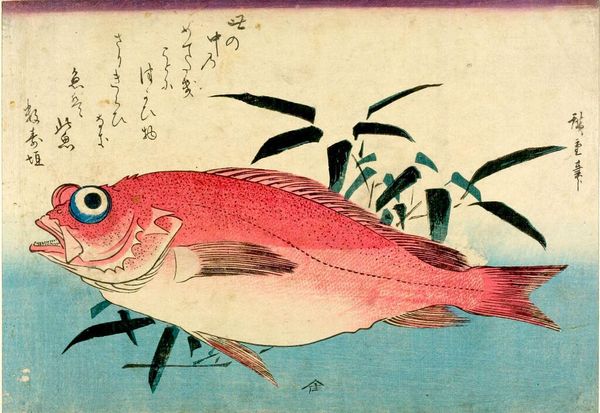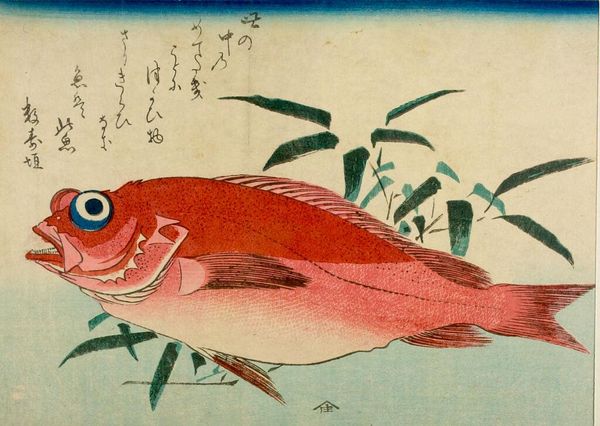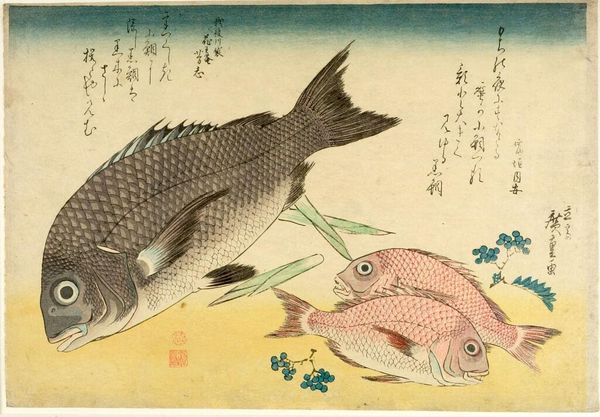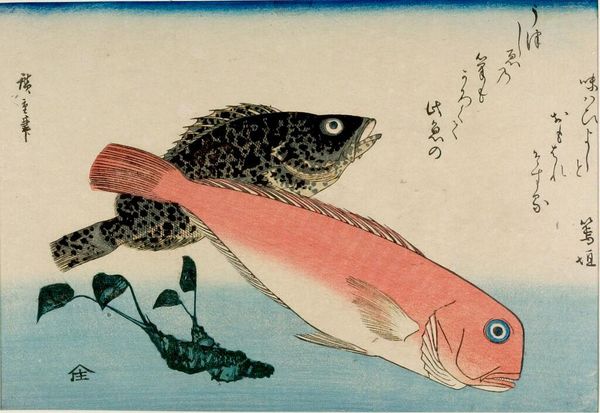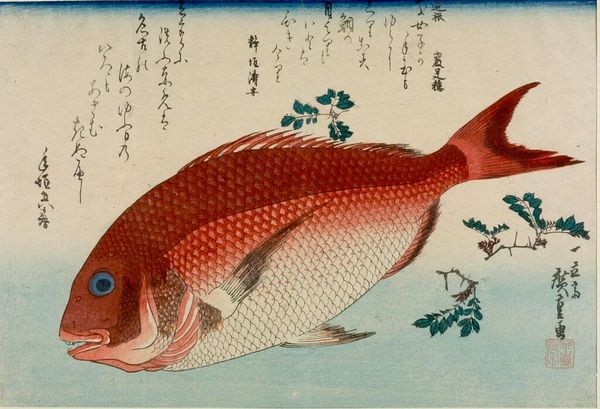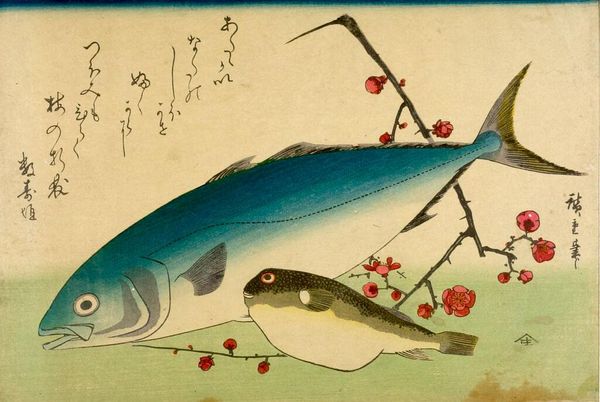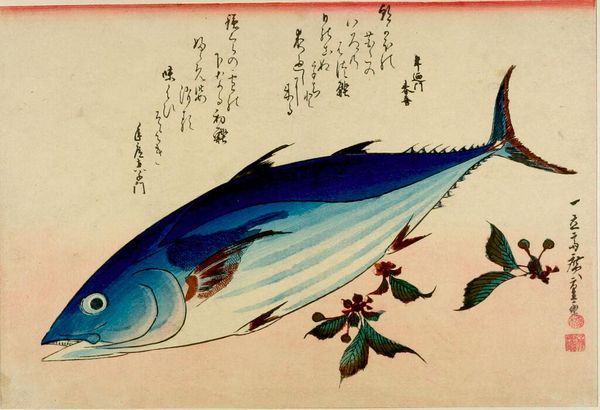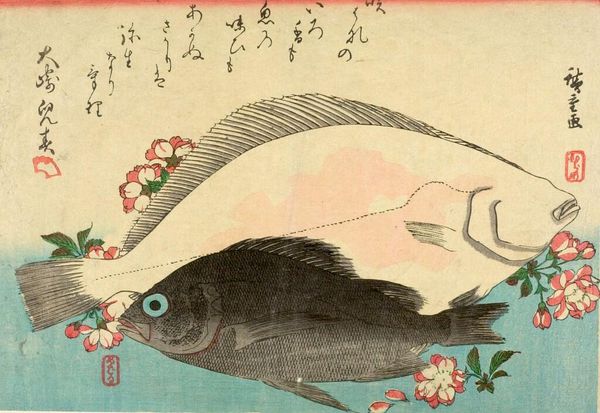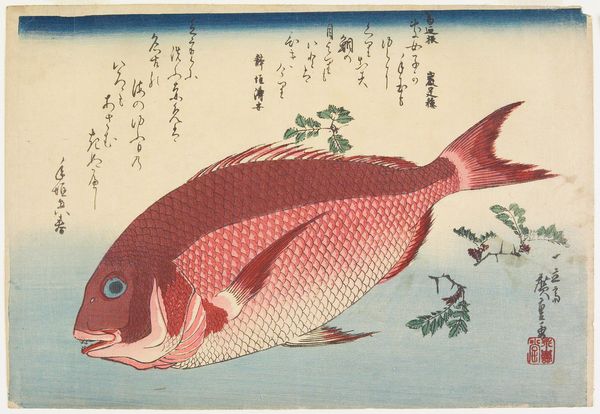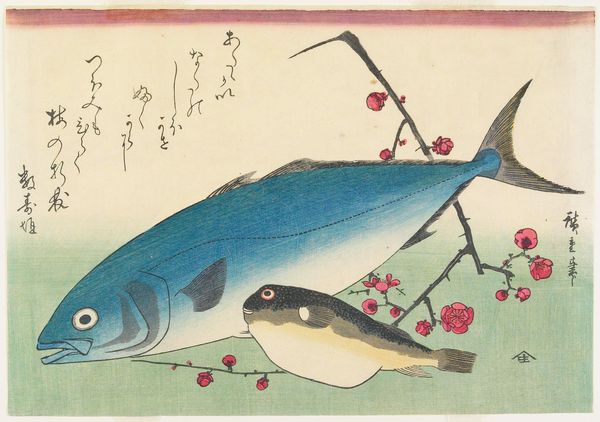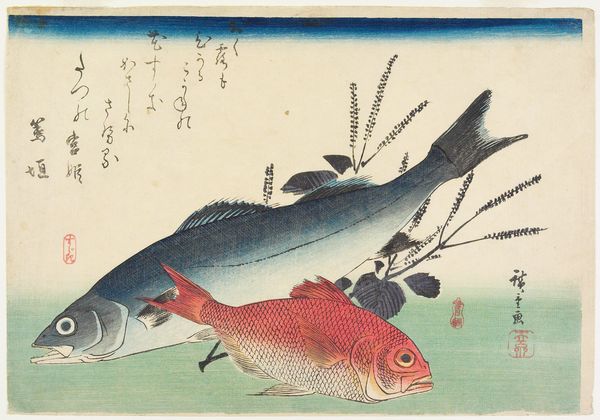
Gurnard (Kanagashira), Right-Eye Flounder (Konoa-garei) and Bamboo Grass (Sasa), from the series A Shoal of Fishes (Uo-zukushi) c. 19th century
0:00
0:00
Dimensions: Paper: H. 26.2 cm x W. 37.7 cm (10 5/16 x 14 13/16 in.)
Copyright: CC0 1.0
Editor: Here we have Utagawa Hiroshige's woodblock print, "Gurnard, Right-Eye Flounder and Bamboo Grass," part of the series "A Shoal of Fishes." I'm struck by how directly the fish confront the viewer. What statements might Hiroshige be making through this composition? Curator: This work goes beyond mere representation, engaging with Edo-period anxieties about sustenance and trade. Consider the societal hierarchy of food, with certain species reserved for elites. Hiroshige, by depicting these fish, is subtly commenting on these social structures. Editor: So, the choice of fish is deliberate, a commentary on class? Curator: Precisely. And it prompts us to think about how food systems intertwine with power dynamics, even in art. The bamboo grass, too, would have had symbolic meaning tied to resilience and everyday life. Editor: It’s amazing how much history and social commentary can be packed into what seems like a simple image. Curator: Indeed, art serves as a powerful lens through which we can examine our relationship to the natural world and to each other.
Comments
No comments
Be the first to comment and join the conversation on the ultimate creative platform.
